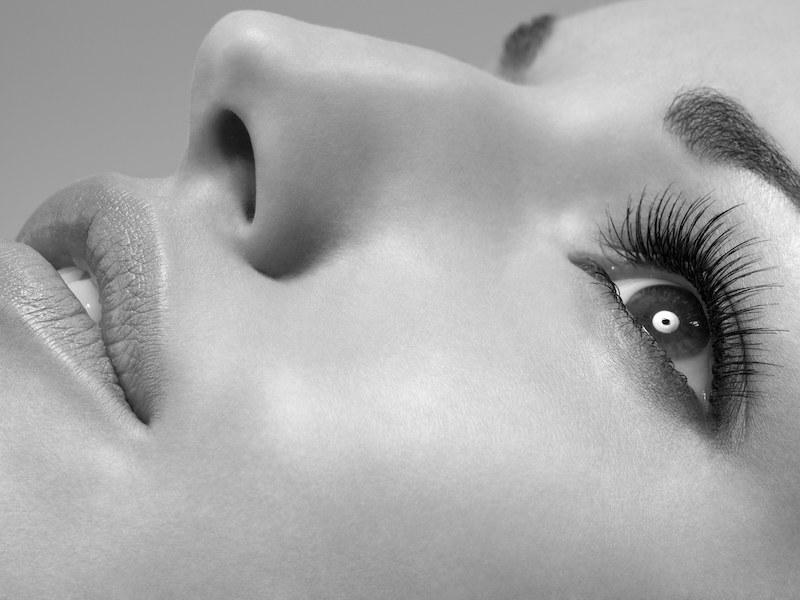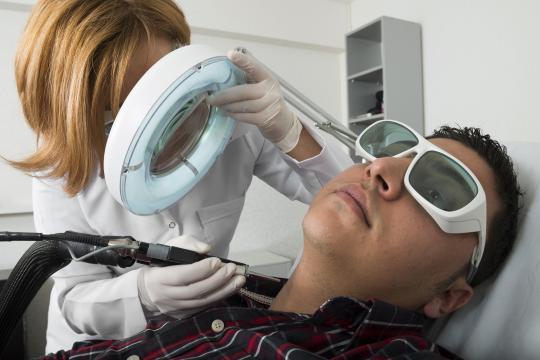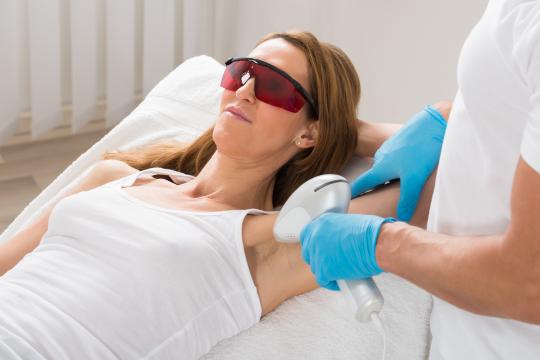If you’ve been following our 5 Little Words series, you’ll know that we take recovery from plastic surgery very seriously. ’Cause while results are important, getting to those results bears a pretty weighty importance too. That requires that you have a solid grasp on what to expect during the recovery period after any surgery—think pain, swelling, downtime, redness and bruising. You know… five little words? We’ve explored these recovery words for rhinoplasty and for a breast lift, and today? Well, today we’re going to toss another popular procedure under our “what to expect from recovery” microscope: liposuction
Most would agree, liposuction gets a gold star when it comes to body contouring—but it’s not a magic wand. Patients who opt for liposuction need to be aware that their final result is going to take some time to appear, they may experience some pain and soreness, and the swelling? Oh lord, the swelling. Okay, that's overly-dramatic, but it’s important to understand exactly what your recovery will look like in order make an informed decision about whether or not liposuction is right for you.
Pain:
- Pain is a funny thing, and we don't mean "funny ha-ha". Pain lives on a spectrum and differs from patient to patient. Some patients will describe discomfort, tightness or itchiness, and another will describe soreness or genuine "ouch"-inducing pain. One person will stub their toe and skip off with a curse and a smile; another will stub their toe and liken it to a near death experience. And while we’re hardly comparing a surgical procedure to stubbing your toe, pain—when it comes to liposuction—won’t be the same for every patient. Most patients have described the pain during liposuction recovery as minimal to moderate, like having had a vigorous workout. They’ve reported that the pain lessens day by day and typically dissipates between 5 to 7 days. Your surgeon will have a pain management plan in place too, which may include pain medication and lifestyle instructions. Some words to the wise: follow the plan. Long-lasting or extreme pain is very rare and could signify a complication—you should contact your surgeon.
- An additional sensation that a patient might experience is that of feeling constricted. You’ll be wearing a compression garment or be wrapped in a tight bandage for what could amount to several weeks. And while it’s tempting to assume that this is simply some additional torture your surgeon is chuckling about behind your back, it’s not. Compression garments are essential for reducing and eliminating our next little word: swelling.
Swelling:
If the point of having a liposuction is to sculpt away gym and diet resistant fat from certain areas of the body, then the immediate post-surgical result of a liposuction procedure could prove… well… disappointing. We’ll just come out and say it: There will be swelling. Trust that there will be swelling.
- Post-liposuction swelling typically reaches its maximum around 48 hours after your procedure, but may not entirely dissipate for up to four months. We know that’s not exactly what you wanted to hear, but you can take heart knowing that the swelling is actually a part of the natural healing process and is exactly why your surgeon will have you all swaddled up in those aforementioned compression garments or bandages. You’ll wear these religiously, because not only does it help reduce and eliminate swelling, but it also promotes skin contraction. Now this seems like a good time for a little meditation: Close your eyes and visualize your newly-sculpted liposuction results draped in a cloak of ill-fitting, baggy, saggy skin that simply refuses to “snap” back to its former tight glory and instead hangs there all loose and flabby and unhappy. Okay, you can open your eyes. Now go put your compression garment back on until your surgeon says you can take it off (4 to 6 weeks).
- Of course, wearing your compression garment isn’t the only instruction you’ll need to adhere to in order to eliminate or reduce swelling after a liposuction procedure. Strenuous exercise and sun and heat exposure can cause fluid retention and addition swelling that you. don’t. need. So no sunning, no sauna, no long hot showers or baths, no hot yoga, no Soul Cycle… just no. Even after your initial recovery from your procedure, minor residual swelling can occur with strenuous activity for the next 6 to 9 months. *Sigh. Your surgeon is your best recovery resource and will tell you when you’re ready to return to all of your daily activities.
Which bring us to downtime.
Downtime:
You: Just how long is this thing going to take?!
Us: You better sit down. Your recovery is going to take as long as your body wants it to. The end.
- Recovering from a surgical procedure is ultimately dependent on the patient. Some patients heal more quickly than others and some take a little more time. Some experience less pain and swelling, others? Not so much. On average, patients whose job requirements are less physically strenuous typically find that they can return to work within 3 to 7 days.
- The first two weeks after your procedure, you’ll be asked to avoid bending, straining and lifting. That means no cleaning the cat box, no picking up tiny tykes, and no moving furniture (for those of you planning your convalescence around an HGTV binge). And any dreams that you had of getting back to the gym will be put on hold for anywhere from 4 to 6 weeks. We're just the messenger folks.
- We already mentioned that staying out of the sun or heat will be helpful in terms of avoiding fluid retention and swelling—but we’ll say it again here. No sauna, no sunbathing, no hot tub, no hot yoga, no hotdogs. No.
- And finally, if a glass or two of wine is an evening companion, you won’t be enjoying that either—at least until you’re no longer reliant on pain medication. A healthy diet is a healing diet—FYI.
In short: You’re lifestyle will be a-changin’ during your liposuction recovery.
Bruising and redness:
Anyone who’s healed from anything will know that, sometimes the healin’ process ain’t pretty. The important thing to keep in mind is that all the not-so-prettiness is leading up to a safe and successful recovery and result.
- You should expect some bruising that will typically dissipate within 7 to 10 days of your procedure.
- A bit of redness around the incision area is to be expected too—it was an incision after all. Excessive or prolonged redness or soreness at the incision site can also be a signal of infection, so if you’re unsure about what your incision should look like, ask your surgeon. Within a few months those incisions should fade into a distant memory, and before you know it, you’ve got your new and improved final result.
While safe and extremely popular, liposuction is still a plastic surgery procedure requiring vetting your doctor, educating yourself about the procedure, and managing your expectations—not only of your result, but also of your recovery. So if you’re considering a liposuction procedure, bone up on these five little words and march them into your plastic surgeon’s office, because ultimately, your doctor will be your best resource for assessing whether a body contouring procedure might be right for you.






